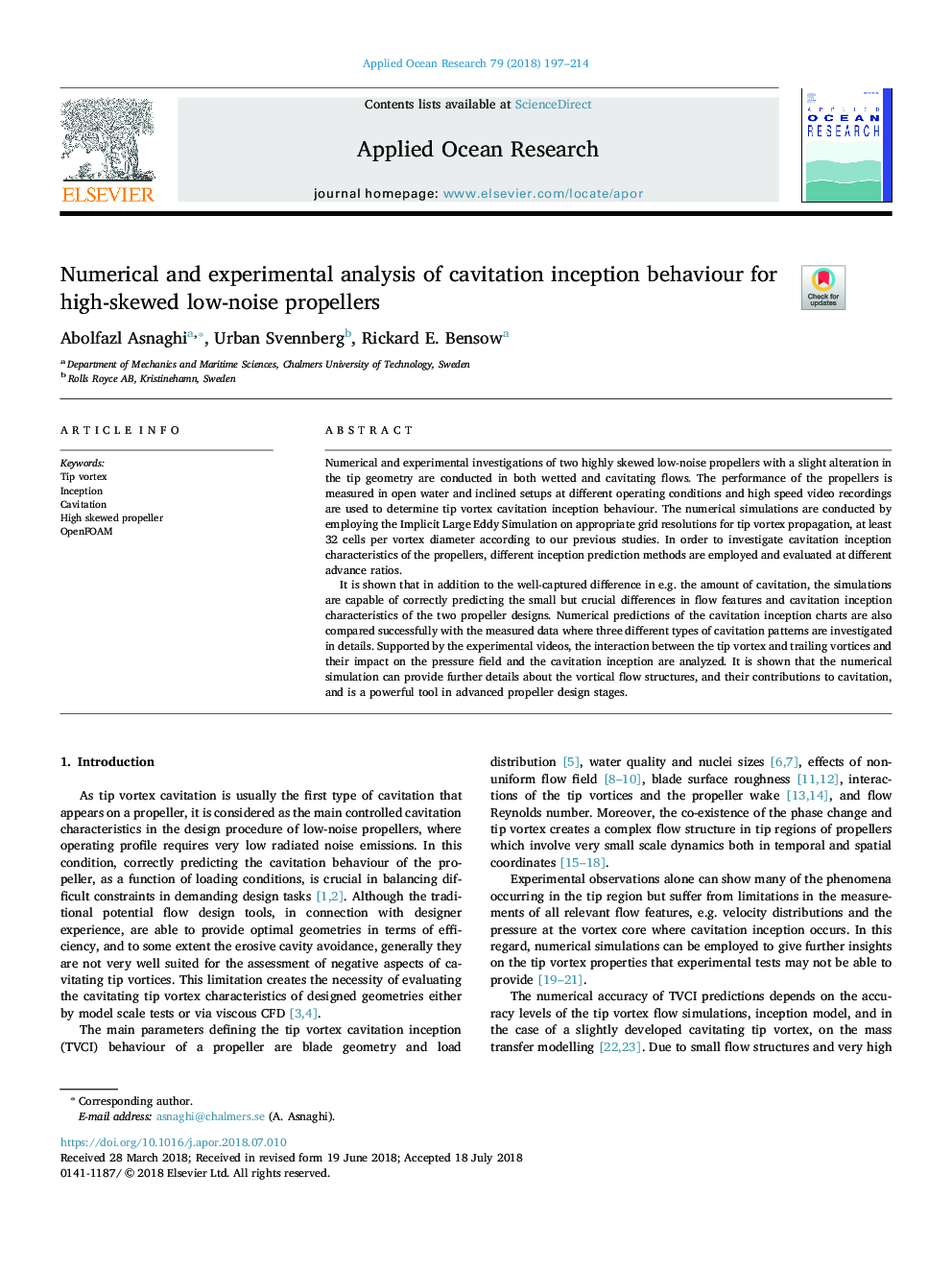| Article ID | Journal | Published Year | Pages | File Type |
|---|---|---|---|---|
| 8059197 | Applied Ocean Research | 2018 | 18 Pages |
Abstract
It is shown that in addition to the well-captured difference in e.g. the amount of cavitation, the simulations are capable of correctly predicting the small but crucial differences in flow features and cavitation inception characteristics of the two propeller designs. Numerical predictions of the cavitation inception charts are also compared successfully with the measured data where three different types of cavitation patterns are investigated in details. Supported by the experimental videos, the interaction between the tip vortex and trailing vortices and their impact on the pressure field and the cavitation inception are analyzed. It is shown that the numerical simulation can provide further details about the vortical flow structures, and their contributions to cavitation, and is a powerful tool in advanced propeller design stages.
Related Topics
Physical Sciences and Engineering
Engineering
Ocean Engineering
Authors
Abolfazl Asnaghi, Urban Svennberg, Rickard E. Bensow,
